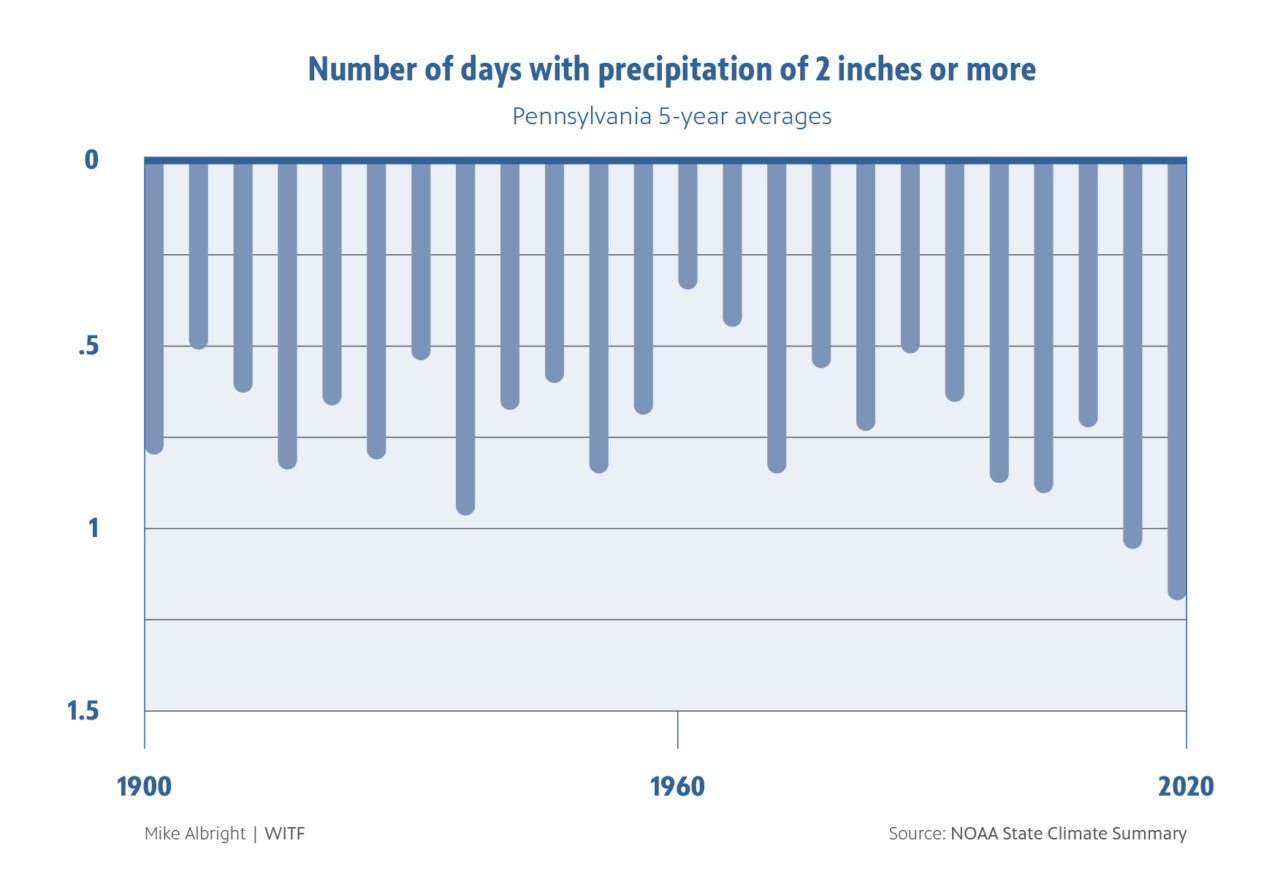Penn State is expanding a tool to give the public access to weather information across the state.
Data from the project could help communities prepare for severe storms and flooding, which are expected to increase in Pennsylvania as the climate changes.
Penn State started installing stations for its statewide environmental monitoring network in 2019. It’s up to 17 stations in operation, with 3 more near completion. The stations are spread fairly evenly, geographically, across the state. Paul Heinemann, a professor of agricultural and biological engineering and a leader on the project, said the team drew a grid over the state to determine the first 20 locations. They did not put any in the southeast corner of the state, because it would overlap with Delaware’s weather network.
Now with a federal grant administered by the Pennsylvania Emergency Management Agency, the university will grow that number to 50. The locations of the 30 new sites have not been finalized. Penn State says the ultimate goal is to have one station in each county.
The solar powered stations have a battery power backup and collect data on air and soil temperature, humidity, solar radiation, air pressure, wind speed and direction, rainfall and soil moisture.
Heinemann said the measurements will be useful for students, utility companies, and emergency managers.
“They see the need for rapid and real time measurements and this is especially true for the potential for flood events,” Heinemann said.
Heinemann said current and past data from the stations is available online, so planners can better track changing conditions.
PEMA spokesman Paul Vezzetti said information from the new sites adds to an existing system that is used to send early alerts to emergency managers on heavy rain events.
“Regularly monitoring a wider range of weather parameters in real-time will better inform the decision-making and situational awareness of emergency managers on the ground, and enhances everyone’s ability to prepare for severe weather,” Vezzetti said. “PEMA’s top priority is the health and safety of Pennsylvanians, and being prepared to respond to any emergencies the Commonwealth may face.”
There are other weather monitoring efforts in the state, but Heinemann said Penn State’s network is meant to make the data more widely available. Some networks require a subscription, and different stations may take different measurements. The information from the Penn State stations is publicly available and standardized
The weather stations are now positioned at Penn State campuses and research facilities, state parks, and airports. Many of the new stations will be placed at K-12 school campuses. A curriculum for the environmental data is being developed in collaboration with Greencastle-Antrim school district.
To view the data, visit this site and select the PEMN network.



0 Commentaires